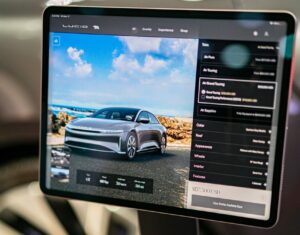
Home / EV Charging News / How Do Electric Vehicles Perform in Cold Weather?
Electric vehicles (EVs) are gaining popularity as a sustainable and environmentally friendly mode of transportation. However, one common concern among potential EV owners is how these vehicles perform in cold weather conditions. Extreme temperatures, especially in winter, can affect various aspects of EV performance, including range, battery life, and charging efficiency. In this article, we’ll explore how electric vehicles handle cold weather and provide insights into the key factors that impact their performance.
To understand the effects of cold weather on electric vehicles, it’s essential to first consider the nature of EV batteries. Lithium-ion batteries, which are commonly used in electric vehicles, are sensitive to temperature changes. Extreme cold temperatures can impact their performance and overall efficiency. Here’s a closer look at the factors influenced by cold weather:
One of the primary concerns with EVs in cold weather is reduced range. When temperatures drop, the chemical reactions within the battery slow down, leading to decreased energy output. As a result, EVs tend to experience a decrease in driving range in cold weather conditions. This reduction in range can vary depending on factors such as the specific EV model, battery size, temperature severity, and driving style.
To mitigate the impact of cold weather on range, many electric vehicles are equipped with battery preconditioning features. This technology allows the battery to be heated or cooled before starting a journey, optimizing its performance in extreme temperatures. Battery preconditioning can help improve the range and overall efficiency of the vehicle, especially during winter months.
Cold weather can also affect the charging process of electric vehicles. When temperatures are low, the charging efficiency may decrease, resulting in longer charging times. Additionally, the regenerative braking system, which recovers energy during deceleration, may not function as efficiently in cold weather. EV owners should be prepared for potential charging delays and consider utilizing indoor or heated charging options when available.
Extreme cold temperatures can accelerate the degradation of lithium-ion batteries over time. While modern EVs are designed to handle temperature variations, frequent exposure to very low temperatures can impact the overall lifespan of the battery. It’s important for EV owners to follow manufacturer recommendations for winter storage and maintenance to minimize the potential effects of cold weather on battery health.
While cold weather can present challenges for electric vehicles, there are several measures EV owners can take to maximize performance and mitigate the impact of low temperatures. Here are some tips to consider:
During colder months, planning your routes in advance can help optimize your EV’s range. Consider factors such as charging station availability, distance, and temperature conditions along the route. Preparing for potential charging stops and utilizing available infrastructure can help ensure a smooth and uninterrupted journey.
Take advantage of your EV’s battery preconditioning feature, if available. Preconditioning the battery before starting a trip can help optimize its performance in cold weather. Plug in your vehicle while it’s still connected to a power source to ensure the battery is warmed up before departure.
Heating the cabin of an electric vehicle consumes energy from the battery, reducing the available range. To maximize your EV’s range in cold weather, consider using seat warmers, steering wheel warmers, or wearing extra layers to stay warm instead of relying solely on cabin heating.
Whenever possible, park your electric vehicle in sheltered or indoor areas during extreme cold weather. Parking in a garage or covered space can help maintain a relatively stable temperature, reducing the impact of cold temperatures on the battery’s performance.
Follow manufacturer recommendations for battery care and maintenance, particularly during winter months. This may include checking and maintaining proper tire pressure, keeping the battery charged above a certain threshold, and storing the vehicle in a climate-controlled environment when not in use for an extended period.
Electric vehicles perform well in cold weather conditions, although certain aspects such as range, charging efficiency, and battery life can be affected. By understanding the impact of cold weather on EVs and implementing appropriate measures, such as battery preconditioning, optimizing routes, and maintaining regular battery care, EV owners can ensure efficient and reliable performance during the winter months. As EV technology continues to advance, improvements in battery performance and thermal management systems will further enhance electric vehicle performance in cold weather conditions.
$4,150.00 Original price was: $4,150.00.$3,990.00Current price is: $3,990.00.
$10,690.00 – $11,390.00

Your Power Management Partner for Over 25 Years Future Generations Depend on Our Decisions Today ™
2024 © All rights reserved by CyberSwitching